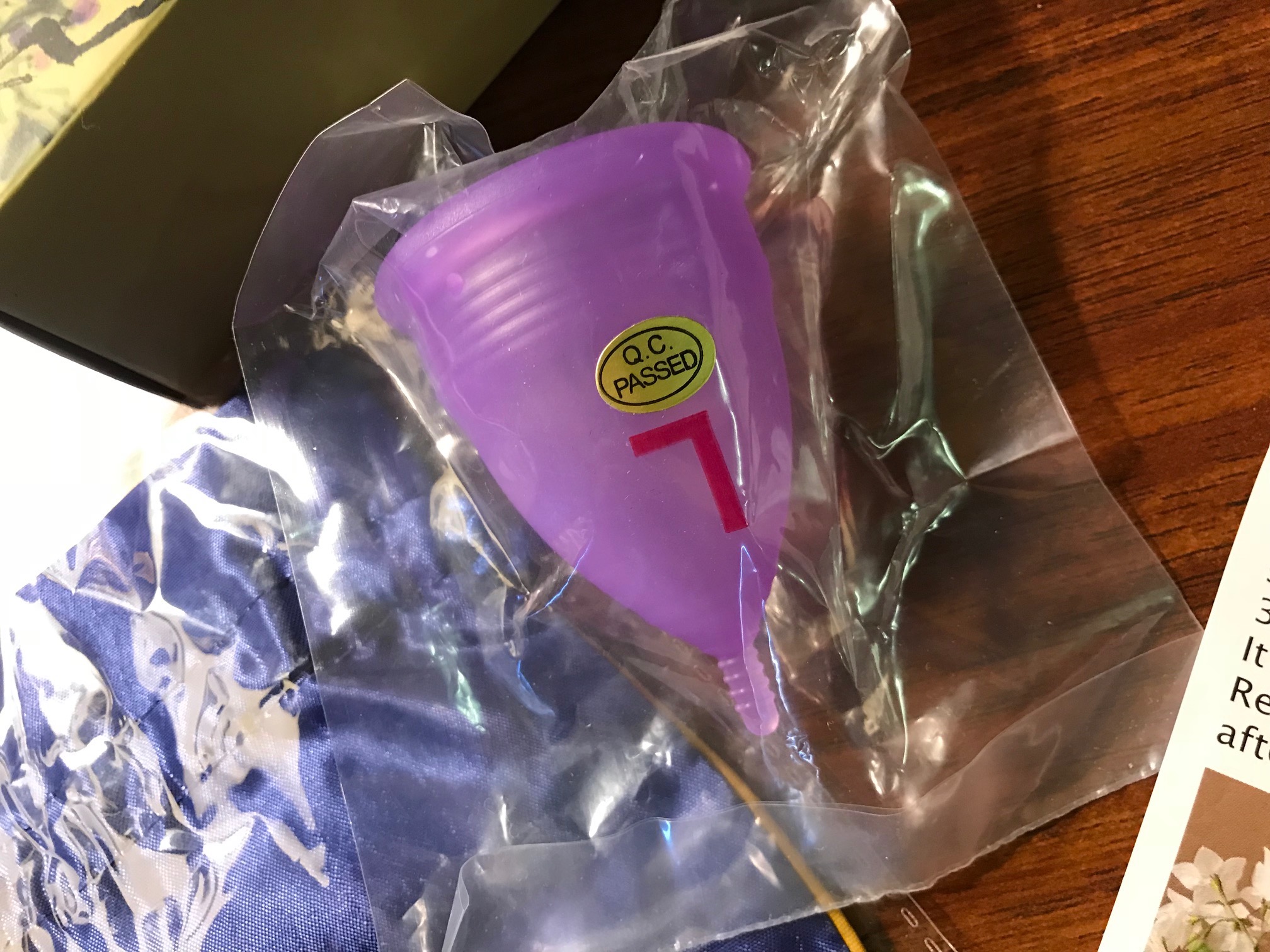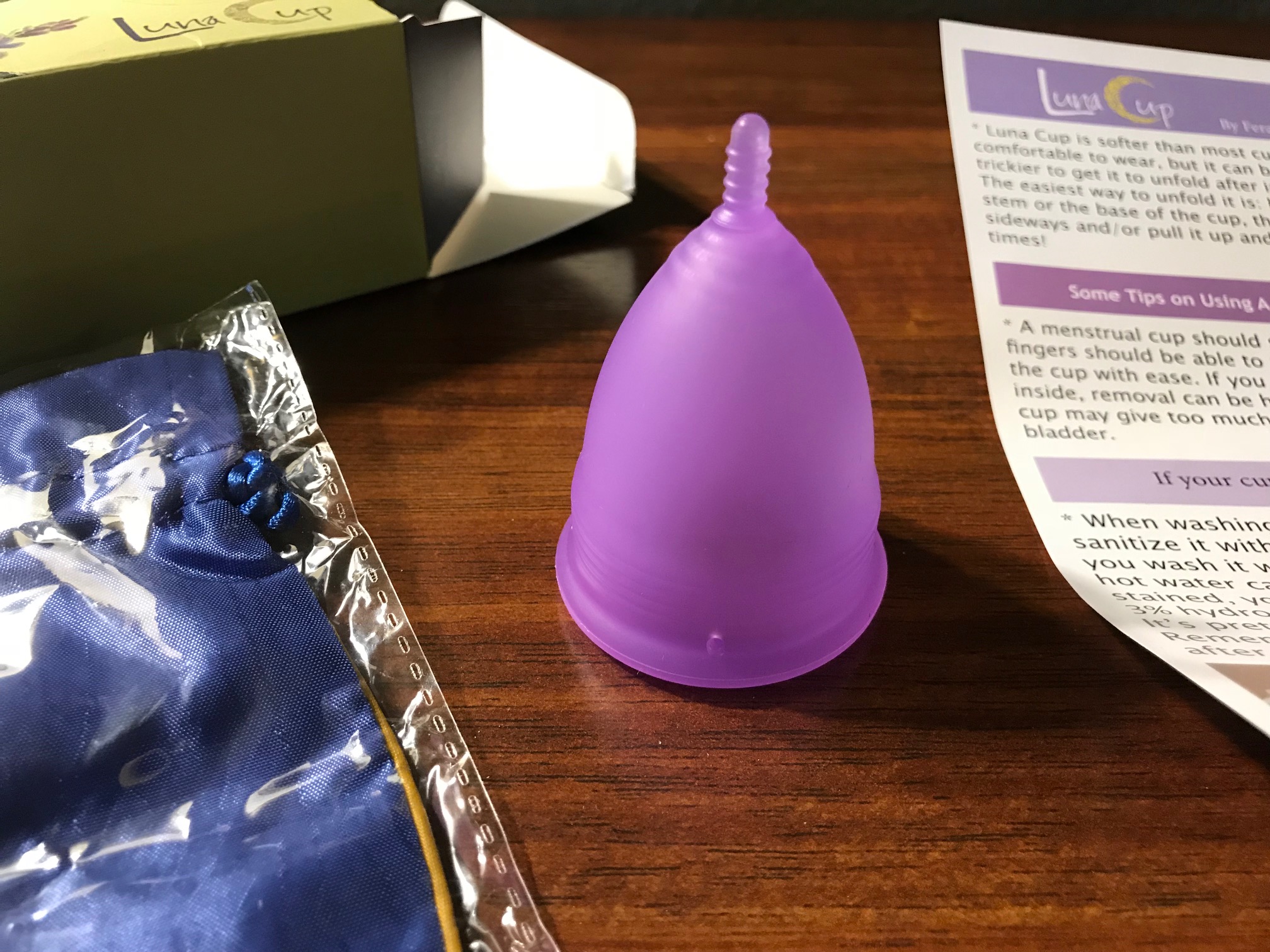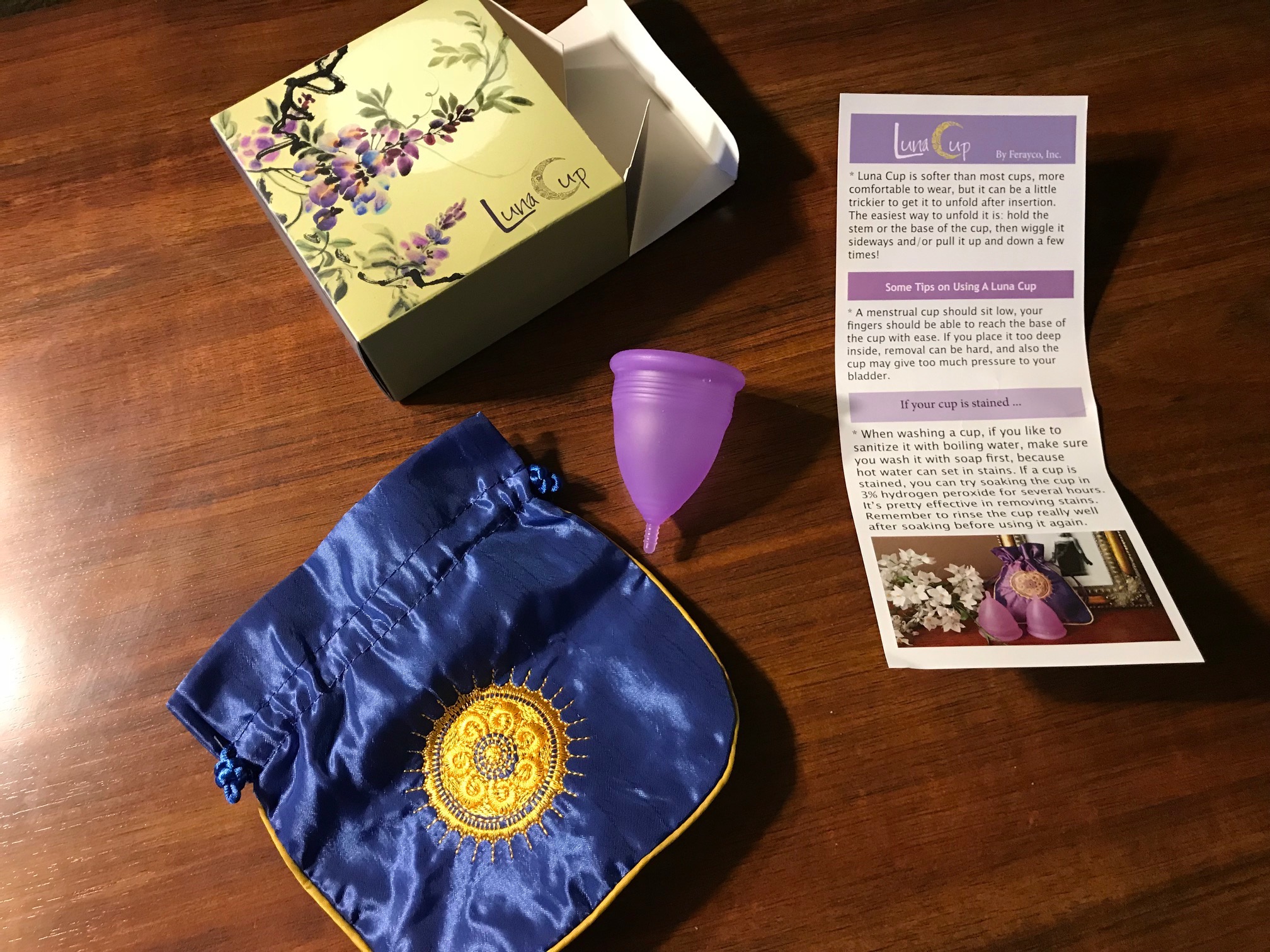#LeadFree: Luna Cup, Purple
As with all of the menstrual cups I have tested so far (from four different brands: Lena, Luna, Diva and Eva) this brand-new (was ordered and sent to me directly) purple silicone menstrual cup from Luna was positive for trace cadmium when tested with an XRF instrument.
See all of my menstrual cup posts by clicking here.
“Trace” in this case means very low levels (when cadmium is detected at trace levels, it is not likely an intentional additive to a product, but a contaminant resulting from a particular element of the manufacturing process.)
The levels of cadmium found in all of these menstrual cups is considered “safe” by all known standards (all standards I have been able to find, including the standards for allowable levels of cadmium in products intended for use by children – which are generally the strictest standards.)
This particular brand (Luna) has had the lowest cadmium levels so far (for all the menstrual cups I have tested), coming in at 11 +/- 4 ppm Cd. As I said, these are very low (yet consistent) levels. By contrast, as with the other brands of similar products, it was also completely negative (zero detected) for lead (Pb), mercury (Hg) and arsenic (As.) All these levels were confirmed with multiple one-minute tests using a newly calibrated Niton XL3T XRF instrument.
As noted in my other posts on the subject (the subject of menstrual cups) the discussion we are having about this in the public forums on Facebook centers around one single question:
Why is cadmium allowed to be present at all — even at trace levels (as detected with an XRF instrument) — in any product made of medical grade silicone?
PLEASE NOTE: No one is asserting this level of cadmium in this application will harm the user. To my knowledge, no one has done a study to assess the possible impact of cadmium at these extremely low levels in products like this. My greater concern is for all of the baby bottle nipples made of the same product (silicone) — that are also consistently testing positive for trace cadmium when tested with an XRF instrument. Given cadmium is a known carcinogen, it makes no sense to me that there be any allowable level (using any detection method) in a baby bottle nipple. And I have tested no fewer than three brands of baby bottle nipples that were (consistently) cadmium-free [ these can be seen here ], so it demonstrably possible to consistently manufacture to this level.
Tamara Rubin
#LeadSafeMama


Never Miss an Important Article Again!
Join our Email List



